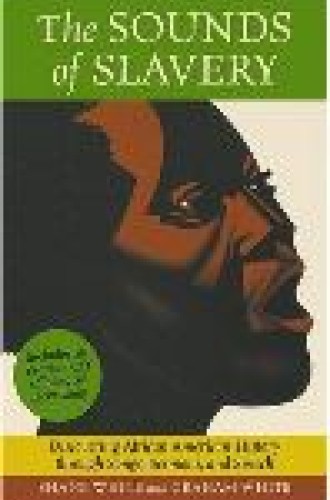The Sounds of Slavery: Discovering African American History Through Songs, Sermons, and Speech
I was daydreaming at a stoplight recently when the sound of thunder shook me from my reverie. It was pulsing rhythmically, and there seemed to be a faint whistling or screeching sound, as if I was in a hurricane or tornado. The sound got louder until it seemed be parked right outside my door. Which it was. It wasn’t thunder—it was a bone-shattering, pit-of-the-stomach-thudding Jeep Cherokee sound system. I glanced in my rearview mirror to see whether my son in the back seat had noticed. Not a chance. He was lost in his own music, headphones tightly clamped on his ears.
Thanks to our individual, portable, downloadable personal stereo units, we are the most aurally privatized society that has ever lived. More than ever we work, walk and drive to the beat of different drummers. We create our own soundtracks.
So did the communities of slaves trying to make a life for themselves in foreign lands. And because their cultures and those of their captors were so radically different, the collision of those soundtracks created cultural dissonances that American music is still trying to resolve. The Sounds of Slavery tries to reconstruct the aural universe of these slaves—the sounds they made and the sounds they heard. It calls us to roll down the windows of history, to take off our headphones so that we can listen to the sounds of their past and ours.
What would those sounds be? Spirituals? We forget that spirituals existed only during the last two or three decades of slavery. And the versions of “Go Down Moses” or “Swing Low” that we sing today probably bear little resemblance to the wild moaning songs of 19th-century worshipers. While spirituals bear the imprint of the slaves, they lack the slaves’ decidedly African spiritual outlook: spirituals are religious songs, and as such they segregate the sacred from the profane. For slaves, there was a continuity of the sacred and secular, of work, worship, leisure and play, so that no part of daily life was too lofty or too trivial to be excluded from the commonest work chant or song of praise. So integral was song to work that when land- or factory-owners heard the voices stop, they worried, for they knew that work, too, was slowing down and something else was afoot.
Slavery was “the most corporeal of institutions.” A slave’s voice was a part of the body that could not be entirely controlled, and as such was his or her most prized possession. The strange and varying timbres of African voices expressed their individuality as they added to a tonal tapestry so rich that it sounded a mere jumble to many Europeans. For Africans, the sermon, the story or the song was not an orderly arrangement but rather a field of meaning, and even more, a frame that invited the co-construction or participation of others. Europeans expected music to have a beginning, middle and end, and did not appreciate the antiphony, repetition and use of parallel statements that marked the songs of the slaves. They didn’t understand that for African Americans, music is cyclical, like life, and repetition can lead to ecstatic fervor. Unaccustomed to complex rhythmic patterns and expecting voices to sing in unison or harmony, Europeans heard cacophony. They lacked the aural tools to hear the music being created by their African-American neighbors.
The historical record has suffered because of Europeans’ inability to hear what was going on around them. White and White, through their exhaustive and thoroughly entertaining use of historical sources, and with their stunning selection of recorded hollers, stories, prayers, sermons, work songs and, yes, spirituals, have constructed an aural record of a time past that is still with us, the background of our American soundtrack.






